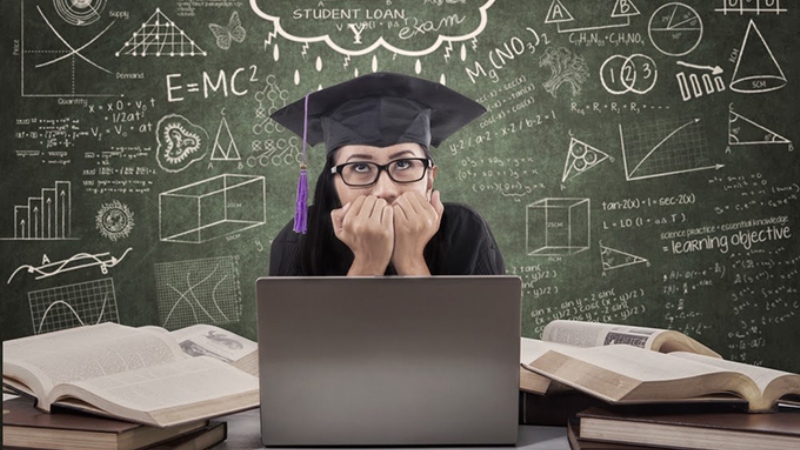Discover effective strategies to boost student confidence through learning progression, enhancing their academic success and overall self-esteem.
Confidence plays a critical role in a student’s academic success and overall well-being. When students believe in their abilities, they are more likely to engage with the material, participate in class, and tackle challenges head-on.
Learning progression, a method that involves gradually increasing the difficulty of tasks and building on prior knowledge, is a powerful strategy to boost student confidence.
Here’s how educators can use learning progression to enhance student confidence and promote a positive learning environment.
1. Set Clear, Achievable Goals
One of the first steps in boosting student confidence is setting clear, achievable goals. Goals provide students with a sense of direction and purpose, helping them understand what is expected and how they can succeed.
When setting goals, ensure they are specific, measurable, attainable, relevant, and time-bound (SMART).
For example, instead of a broad goal like “improve in math,” a SMART goal would be “solve 10 algebra problems correctly within 30 minutes by the end of the week.”
How to Implement:
- Break down larger goals into smaller, manageable tasks.
- Regularly review and adjust goals based on student progress.
- Celebrate milestones and achievements to build a sense of accomplishment.
2. Provide Scaffolded Support
Scaffolding is a teaching method that involves providing temporary support to students as they learn new concepts.
This support can be gradually removed as students become more proficient. Scaffolding helps students gain confidence by ensuring they have the necessary tools and guidance to succeed at each stage of their learning journey.
How to Implement:
- Use instructional aids such as graphic organizers, visual aids, and step-by-step instructions.
- Offer hints and prompts to guide students through challenging tasks.
- Gradually reduce support as students demonstrate increased competence.
3. Encourage a Growth Mindset
A growth mindset, the belief that abilities can be developed through dedication and hard work, is essential for boosting student confidence.
Encouraging a growth mindset helps students view challenges as opportunities to learn and grow, rather than as threats to their self-esteem.
How to Implement:
- Praise effort, perseverance, and progress rather than innate ability.
- Use language that emphasizes learning and improvement, such as “You worked hard on this problem” instead of “You’re so smart.”
- Share stories of successful individuals who overcame obstacles through hard work and determination.
4. Provide Constructive Feedback
Constructive feedback is vital for helping students understand their strengths and areas for improvement. Effective feedback should be specific, timely, and focused on the task rather than the individual.
By providing constructive feedback, educators can guide students toward improvement while reinforcing their confidence in their abilities.
How to Implement:
- Highlight specific aspects of the student’s work that are well done.
- Offer actionable suggestions for improvement.
- Balance positive feedback with areas for growth to maintain motivation.
5. Foster a Positive Classroom Environment
A positive classroom environment is one where students feel safe, supported, and valued. Such an environment encourages risk-taking, collaboration, and a willingness to engage in the learning process. Building a positive classroom culture can significantly boost student confidence.
How to Implement:
- Establish clear expectations for respectful behavior and mutual support.
- Encourage collaboration and peer support through group activities and discussions.
- Create a welcoming and inclusive atmosphere where all students feel they belong.
6. Utilize Differentiated Instruction
Differentiated instruction involves tailoring teaching methods to meet the diverse needs of students.
By recognizing and addressing individual learning styles, strengths, and weaknesses, educators can ensure that each student receives the appropriate level of challenge and support.
How to Implement:
- Use a variety of instructional strategies, such as visual, auditory, and kinesthetic activities.
- Provide options for students to demonstrate their understanding in different ways, such as through projects, presentations, or written assignments.
- Offer varying levels of difficulty for tasks to match each student’s readiness level.
7. Incorporate Self-Assessment and Reflection
Encouraging students to assess their own work and reflect on their learning process helps them develop self-awareness and confidence in their abilities.
Self-assessment and reflection allow students to recognize their progress, set personal goals, and take ownership of their learning.
How to Implement:
- Provide rubrics and checklists for students to evaluate their work.
- Incorporate regular reflection activities, such as journaling or group discussions about what they have learned.
- Encourage students to set personal learning goals and track their progress.
8. Celebrate Successes, Big and Small
Celebrating successes, no matter how small, reinforces positive behavior and builds confidence. Recognizing and celebrating achievements helps students feel valued and motivated to continue striving for success.
How to Implement:
- Acknowledge individual and group achievements publicly in class.
- Use reward systems, such as certificates, stickers, or a points system, to celebrate milestones.
- Encourage students to share their successes and support each other’s accomplishments.
Conclusion
Boosting student confidence through learning progression involves setting clear goals, providing scaffolded support, fostering a growth mindset, and creating a positive learning environment.
By implementing these PublicEdCenter strategies, educators can help students develop the confidence and resilience needed to tackle challenges and achieve their academic potential.
Encouraging self-assessment, celebrating successes, and differentiating instruction are key components in building a supportive and empowering classroom that nurtures confident, capable learners.






